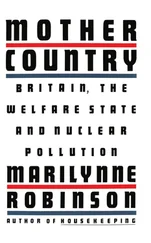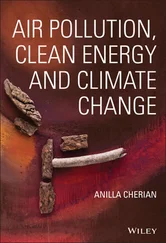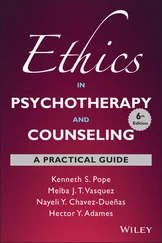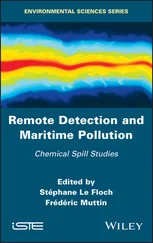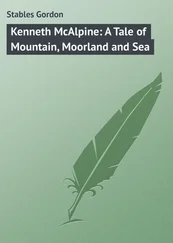As I have already said, I have tried to make this book an objective account of pollution. I fear that I shall be attacked from all sides. In discussions I have been accused of exaggerating the dangerous effects of industrial processes and of beneficial agricultural chemicals. I have also been told that I play down the dangers of these substances. So long as the attacks do indeed come from these different quarters I shall not feel that I have entirely failed in my objective.
This book is essentially an account of the way in which man is unintentionally contaminating his environment. This is a world-wide problem, but for the most part I am restricting my scope to consider the situation in Britain. I do this for two reasons, first because this treatment seems appropriate to a volume in the New Naturalist series, and secondly because although the problem is more acute in these small, developed and densely populated islands than in many other parts of the world, it is possible that what we do can help and guide others, and serve as a warning to prevent damage in the countries at present undeveloped which might otherwise accompany their economic development.
I think it is quite logical to bring together in one book the effects on our environments and on our wild life of pollutions which arise from urban conditions and from industry, and the rather special case of pesticides , which have recently been shown to constitute such an important contribution to environmental pollution. In all cases we are dealing with effects which were not deliberately planned by those who produce them. Pollution, including radiation, has grown as a side effect of the increase in human population, and of increased material productivity. Pest control began in quite a different way, but it is the side effects of modern pesticides, substances which could only have been produced and developed in an industrial system, and which may be effective weapons when properly used, which are causing so much concern.
In this book I have attempted to review the present situation, show how it has arisen, and discuss how man may either continue to pollute the earth and to impoverish it by destroying and restricting its flora and fauna, or alternatively may control his own activities for the benefit of posterity. The situation is serious. Much irremediable damage has already been done. On the other hand, we have learned how to avoid the worst types of pollution. Public opinion is strongly in favour of controlling pollution, and we are not so dogmatically in favour of eradicating any forms of life we consider to be “pests” as perhaps we used to be. If mankind is prepared to make a determined effort, to support much more research to make that effort effective, our descendants may not be condemned to live on an impoverished planet devoid of so much of the varied life which has made it so interesting and so beautiful. There is one other point which should be noted. Some pollutions, particularly from insecticides, seem to be harmful to wild life but not, as yet, to man. Air pollution is more often seen to damage plants than to harm man. Perhaps we should look upon these as useful “early warning” systems, and use the opportunity to reduce the chances of future damage to our own species.
Man deliberately alters the face of the earth, to a degree to which no other species of animal has aspired. He builds cities, factories and roads which wipe out wild life over large areas. He does this quite intentionally, assuming that the gain far outweighs the loss, though his pollution of the surrounding countryside with domestic and industrial effluents is not intentional. However, important as are the effects of urban and industrial development, it is as a farmer that man has the most profound effects on the landscape, and on the plants and animals which live there. An excellent account of these changes is given in Man and the Land by Sir Dudley Stamp. Farmers destroy the natural vegetation, and substitute wide areas of alien plants grown in monoculture. They deliberately try to get rid of plants which compete with their crops – that is, weeds. They try to destroy animals which eat their crops and so reduce the amount harvested – that is, pests. As agriculture has developed, new methods of dealing with weeds and pests have been discovered and put into use. To-day we are all conscious of the fact that chemical controls have been developed, and that poisonous substances are widely used to achieve control. We know that these poisons may kill birds and other forms of wild life, and we fear that they may endanger human health. However, we tend to forget that these possible toxic side effects may be less catastrophic to wild life than are the ecological effects of “traditional” agriculture.
Man has existed for hundreds of thousands of years, but it is only within the last ten thousand that he has had any considerable ecological effect, and only within the last millenium that he has really begun to change the whole appearance of the earth’s surface. Until about 8,000 B.C. man was a hunter and a gatherer of wild plants, with no domestic animals and no crops. Life, as Hobbes has said, was “nasty, brutish and short.” Man had little effect on his environment. He ate fruit and berries, and helped to disperse the seeds as do birds and animals to-day. His waste-products were probably dispersed over the land and helped to fertilise it. When he died his remains decayed and the nutrients were returned to the system. The nastiness of his life was probably made worse by pollution, even at that stage of his development, and pests contributed to its shortness. Some animals are naturally clean. They excrete in recognised latrines some distance from their usual resting places, and they do not leave the decaying remains of food in inconvenient places. Other animals, and primitive man was probably one of them, are not so hygienic, and if he lived in a cave it probably stank disgustingly. Even when he buried his dead he sometimes did so beneath his dwelling, just where decay would be most objectionable. Under these conditions many diseases must have been rife.
Early man probably thought of the larger carnivores as the most serious pests. He competed with them for animal food when he became a hunter, and he himself formed a part of their prey. At first he did little positive to control these pests; his main object was to avoid them. Later, but long before he became a farmer, man in some parts of the world learned to trap and hunt even the most ferocious wild animals, and he probably accelerated the extinction of several species. Recent work on the so-called “Pleistocene overkill” goes so far as to suggest that man exterminated nearly half the larger mammals in Africa some 50,000 years ago, and that in North Africa (where man arrived much later) he similarly killed off at least sixty per cent of the species of large mammals around 10,000 B.C. If these conclusions are finally substantiated, they will have a profound effect on ecological thinking. Early man probably paid little attention to the smaller insect pests, lice, bugs and fleas, from which he no doubt suffered. He did not realise that these were not only a nuisance, but were also the carriers of diseases which were far more deadly than all the lions and tigers and snakes which he so greatly feared. At this stage man was simply an animal, competing with other animals, and doing little to upset the uneasy balance of nature.
There were cases where hunters profoundly changed the landscape. It is likely that North American Indians deliberately burned the forest, and so encouraged grassland which could maintain larger herds of buffalo. This could be considered an early example of wild life conservation! It must also have had profound effects on all the other animals and plants in the region. Incidentally, at a much later date, when the prairies were cultivated to grow cereal crops, the buffaloes became “pests” and were almost completely exterminated.
Читать дальше

